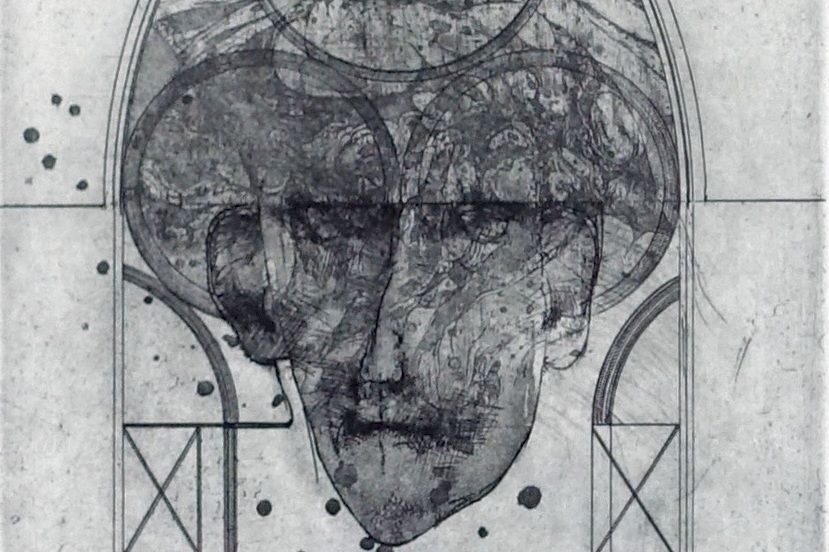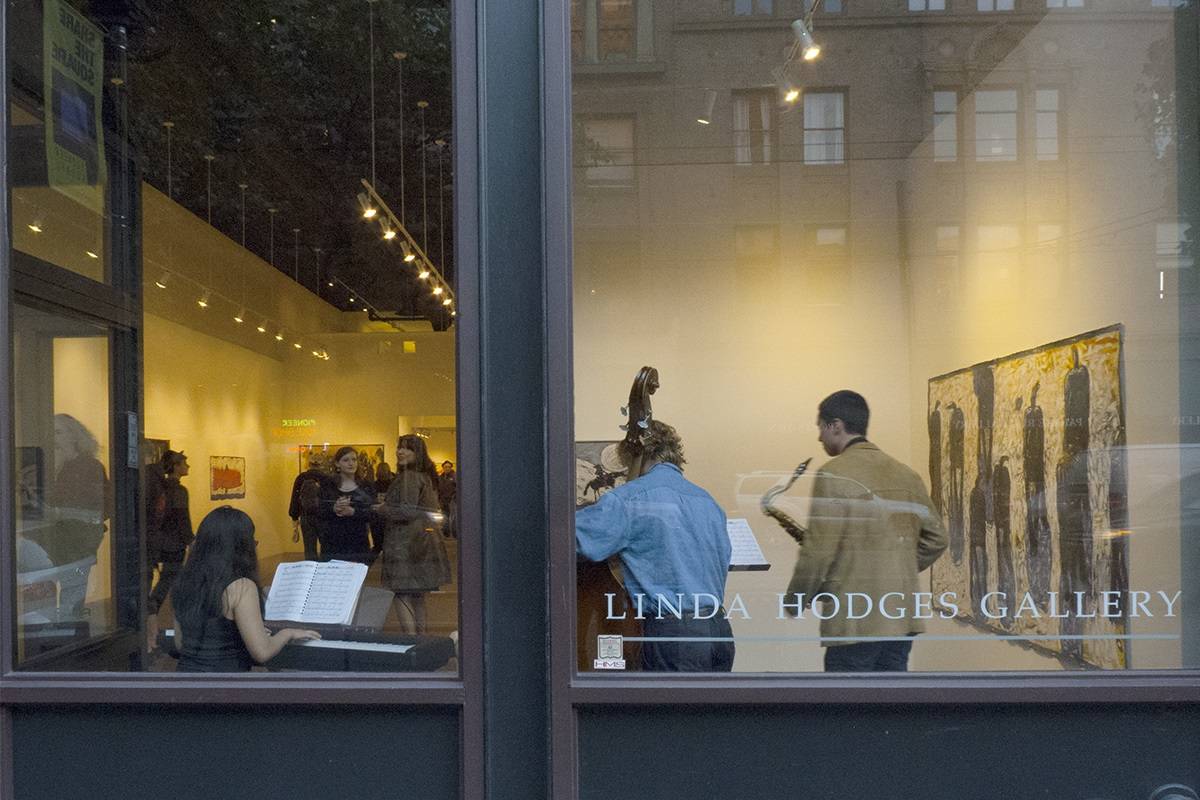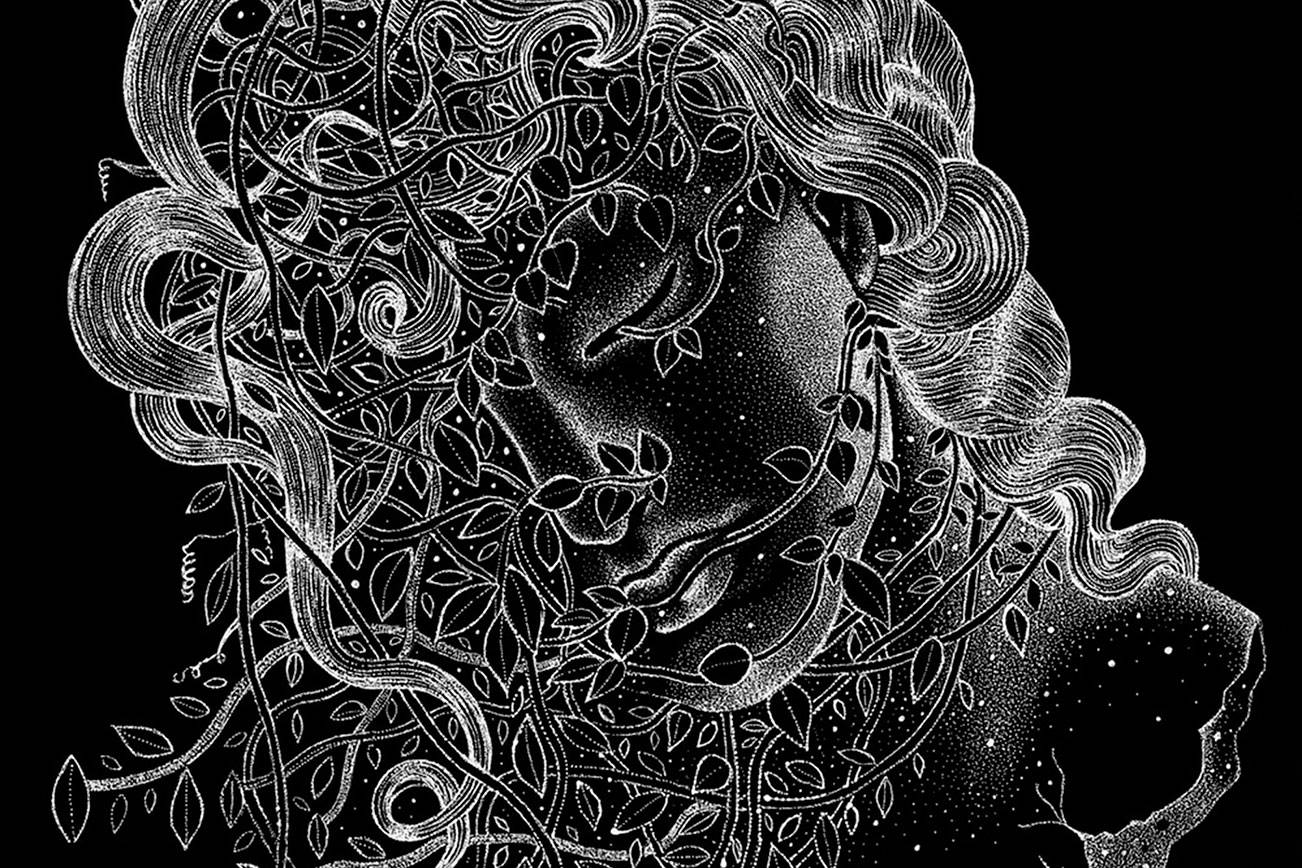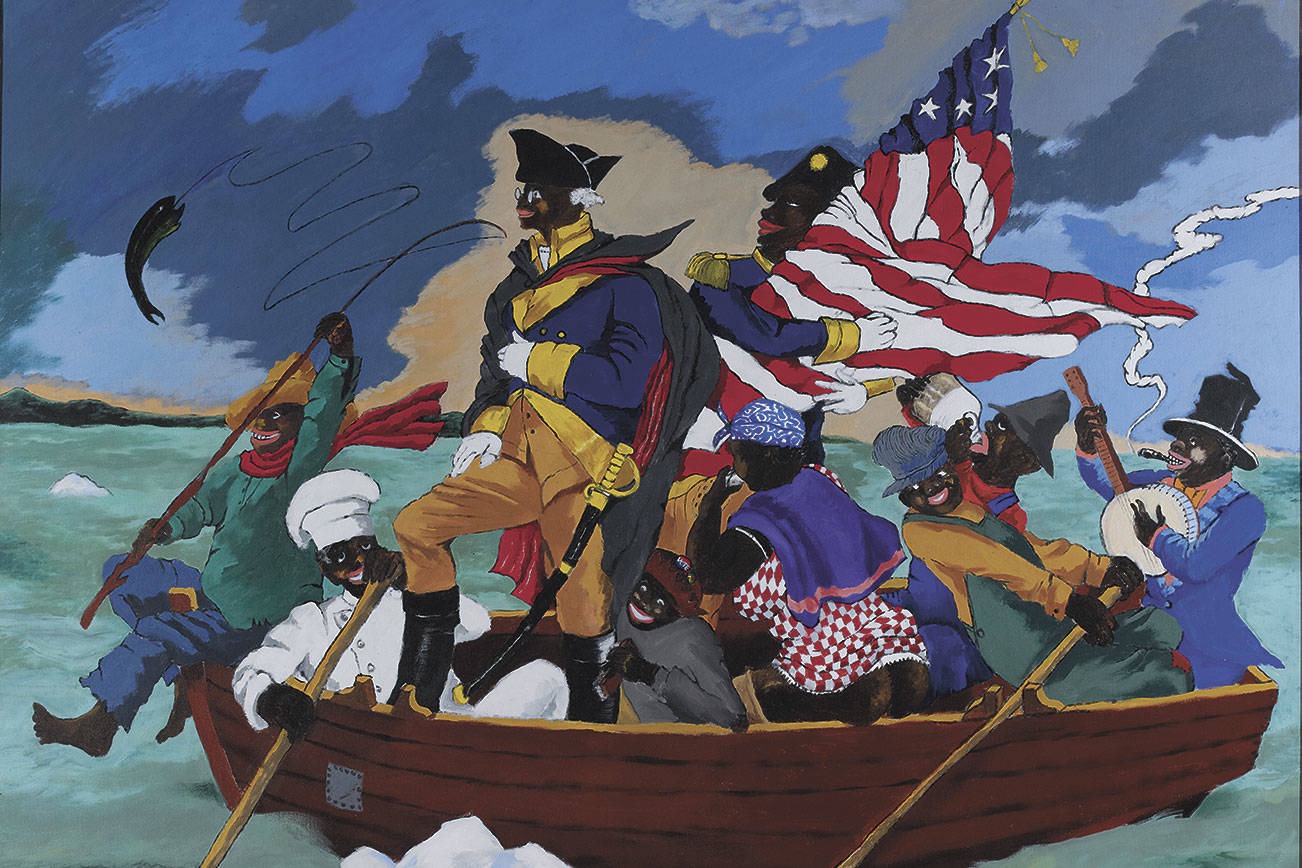One can hope that by the time this article hits the newsstands, a peaceful transition of power will be underway. However, one cannot expect it, and either way, the fighting among ourselves will not soon end.
But where shall wisdom be found? And where is the place of understanding?
I feel that the most sanity-restoring room in Seattle right now is CoCA’s gallery in Pioneer Square. One can generally count on galleries to provide a little quiet and catharsis. This month, having space for that is essential for one’s emotional well-being, and CoCA’s show could not be more timely.
Artist Robert Ernst Marx published his portfolio Considering the Voluntary Absence of God in 2003 through New York’s Black Bird Press. The complete work includes 25 etchings paired with quotes on belief and morality, power and fear. CoCA is exhibiting all of Considering the Voluntary Absence of God in an eponymous show organized by longtime arts advocate Joseph Roberts, in cooperation with Davidson Galleries and Marx himself. The majority of the quotes are from literary works from the past few decades, and authors include Steven Hawking, Octavia Butler, and Salman Rushdie. These broadsides are bracketed by two quotes without engravings, beginning with a phrase anonymously scrawled on a wall in Washington D.C., shortly after the September 11 attacks: “Dear God, save us from the people who believe in you.”
It’s the only text in the portfolio printed in red ink. In matters of God, red letters are more commonly associated with the words of Christ than of apostates. But given that Marx points to the constant crucifixion of compassion by dogma and fear, this choice is appropriate.
The first broadside in the series also features the oldest quote, from 1580, an excerpt from Michel de Montaigne’s Essays: “Man is certainly crazy. He could not make a mite, and he makes gods by the dozen.” It’s true, and the god whose absence is to be considered in Marx’s series is not merely a deity, but any abstract god of state or market and its more tangible avatars: monarchs, politicians, celebrities, athletes, et al.
Each aphorism invites deeper thinking and discussion, and adjacent to the agonized, ambiguous figures in Marx’s etchings, they have both gravity and humility. Beyond their wisdom, their format is itself an antidote to one of the more pernicious vectors of opinion: the meme.
From illuminated manuscripts to emblem books to contemporary comics, the union of text and image has been long used to make the former more complete and convincing. Among the superabundance of images we see daily, including countless dopey ads, the meme has the distinction of being the most intellectually bankrupt marriage of text and image in circulation.
In addition to being aesthetically repugnant, a political meme is always pure propaganda. It tells a single story in a single breath, and anticipates that any discussion to follow will be just as abbreviated. By its assumptions, it either limits the scope of what can be said or halts dialog altogether when deployed. There is neither investigation nor meditation. A meme is designed to be shared thoughtlessly, and even its image (e.g., a scowling politico, a gun, a pastoral scene) simplifies its matter into a single emotional response. Like so much excessive editorialization in journalism, the meme imposes its indignation on the viewer before one even gets to the intelligible material (provided there is any).
How confounding are Marx’s figures, and how thoroughly they unsettle us into a receptive curiosity! They do not respond literally to the words, nor do they evoke a universal reaction. An occasional mitre appears, but most do not even evoke a specific religious tradition. The faces are distorted, peevish, sometimes partly destroyed or obscured, sometimes not entirely human.
In the second plate, accompanying the words of Margaret Atwood, a ghoulish composite form has too many heads and too many limbs, with hands cramped in stiff gestures. The text comes from her novel The Robber Bride, and regards fundamentalist philistinism, which seeks to uncover occult conspiracies in pop culture and in turn gives its dreaded enemy even more power. We saw an example just last week, when far-right pundits connected Marina Abramovic’s mid-’90s “Spirit Cooking” performances with Satanism. Naturally, they also linked this to Hillary Clinton via the Podesta e-mails, making the incident the most literal witch hunt yet in a campaign full of them.
However, the seeds of discord and alienation are not sown along party lines. They are scattered everywhere. As Atwood points out, “Evil doesn’t require such invocations, such childish and stagy rituals. Nothing so complicated.” Evil is boring, banal, brought into the world so casually. As Sheri S. Tepper wrote in Gibbon’s Decline and Fall (published the same year that Abramovic was painting in pig’s blood), one might say that in the story of Eden, the first sin was not eating the apple, but in Adam’s quickness to blame Eve and not accept his own culpability.
Each plate is full of these reminders of how we all might pass blame, and how in the worst circumstances this scapegoating inspires atrocities. Though they come from disparate texts, the succinct aphorisms subtly echo and amplify one another. Like the human qualities to which they allude, each element of Marx’s portfolio exists not in isolation, but in concert with others.
This is the unique nature of portfolios as an art form. As Miranda Metcalf of Davidson Galleries explains, “Portfolios are unusual in the print world because they are most often experienced as an event. As opposed to an individual print which will be framed and hung on a wall, to look at a portfolio one must set time aside to sit down and go through each page independently.”
Metcalf points out that there is an intimate and tactile experience with portfolios. Prints hung on walls might inspire conversation among visitors, but with a portfolio, “You hold the pages in your hands, close to your face. There is no glass between you and the texture of plate or smell of the paper. When you’re done looking, you pack it all away until the time that you will look through it again.”
For those who want to purchase individual editioned prints from the series, you can find them at Davidson Galleries. For those who want to experience the whole of Marx’s portfolio, get to CoCA. You won’t be able to hold the pieces in your hands, but you’ll be able to take your time, moving from piece to piece or criss-crossing the room. The blunt, sometimes melancholy wisdom is a balm to the base fury of these fraught times.
The closing quote of the portfolio is from Thomas Jefferson’s Notes on the State of Virginia, published in the 1780s. Marx has incorrectly dated it 1776, a most notable and memorable year for the country. (Unlike many memes, on Snopes this text would still rank “Mostly True.”) Two-hundred and 40 years after the nation’s founding, Jefferson’s argument against state-mandated religion continues to be quoted, and tested: “It does me no injury for my neighbour to say there are 20 gods, or no god. It neither picks my pocket nor breaks my leg.”
Some will say (or scrawl on walls in the Capitol) that in fact injury follows from belief, whether in God or Party. After this election, we may be inclined to agree, but might also see beyond these distinctions to the fundamental divide of self and Other, the searching need for reconciliation, which is the true thread that binds Marx’s portfolio. Let us hope we find that thread for ourselves sooner than later, or, in the words of Octavia Butler: “Unite-/Or be divided,/robbed,/ruled,/killed/By those who see you as prey./Embrace diversity/Or be destroyed.” Considering the Voluntary Absence of God, CoCA, 114 Third Ave. S., cocaseattle.org. 10:30 a.m.–4:30 p.m. Thurs.–Sat. Ends Wed., Nov. 26.
visualarts@seattleweekly.com








